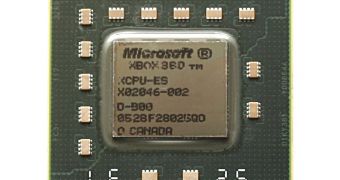Microsoft has apparently taped out the chip that will go into the company’s upcoming console, the Xbox Next, with the first version of this processor being expected get back from manufacturing until the end of this year, according to a recent report.
In electronics design, the “tape out” term is used to describe the final result of the design cycle of a chip and means that the integrated circuit can be sent to the foundry for fabricating the first physical samples.
After the first revision of the silicon comes back from manufacturing this usually goes through a number of spins as the design is further refined to eliminate any potential flaws that made their way into the integrated circuit.
This is quite a lengthy process and according to SemiAccurate seems like it will be finalized by Microsoft’s engineers in December of 2012, if no major problems are encountered along the way.
The chip will then enter mass production, which is expected to take about three months, with a few more months being required for system production and stockpiling launch quantities.
This means that the launch of the Xbox Next will take place sometime in late spring or early summer 2013, although this estimate could be wrong as Microsoft hasn’t provided game developers with documentation regarding the next-gen Xbox.
If true, Microsoft’s move is indeed strange as writing a game from scratch usually takes developers about two years, provided that the company doesn’t deliver some kind of backwards compatibility with the Xbox 360.
Moving to the hardware that will be included in this chip, known internally by the code name of Oban, the only thing that seems to be certain at this point in time is that it will include an AMD graphics core.
IBM seems to also be involved, which points out to the PowerPC architecture and eDRAM memory, but there’s also a small chance that the Xbox Next will get an x86 core, similar to Trinity, developed by AMD.
Sadly, this is all the info that is available at this time, but 2012 should bring us more details regarding Microsoft’s Oban chip and its specifications.

 14 DAY TRIAL //
14 DAY TRIAL //